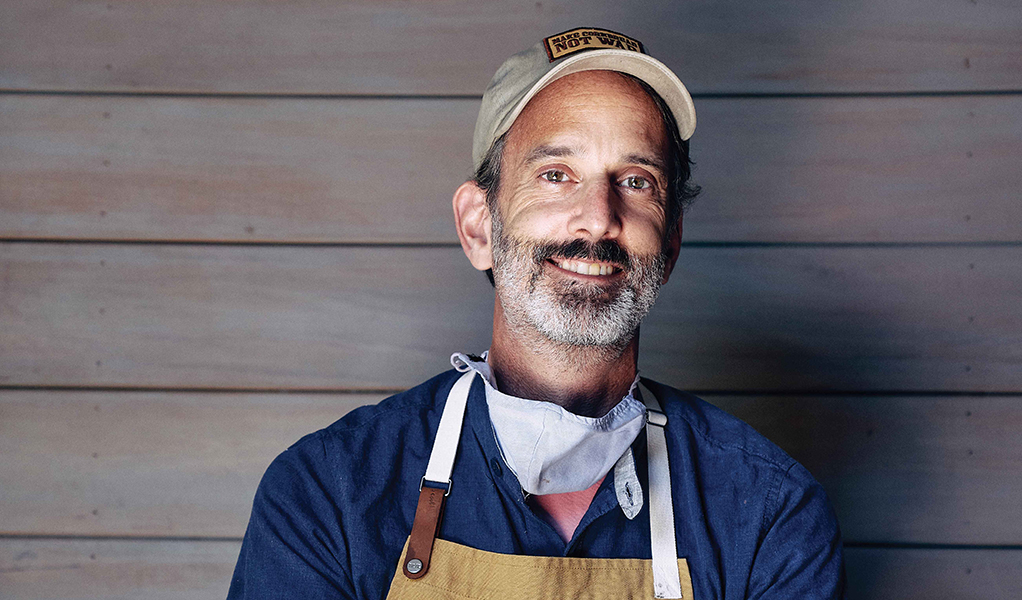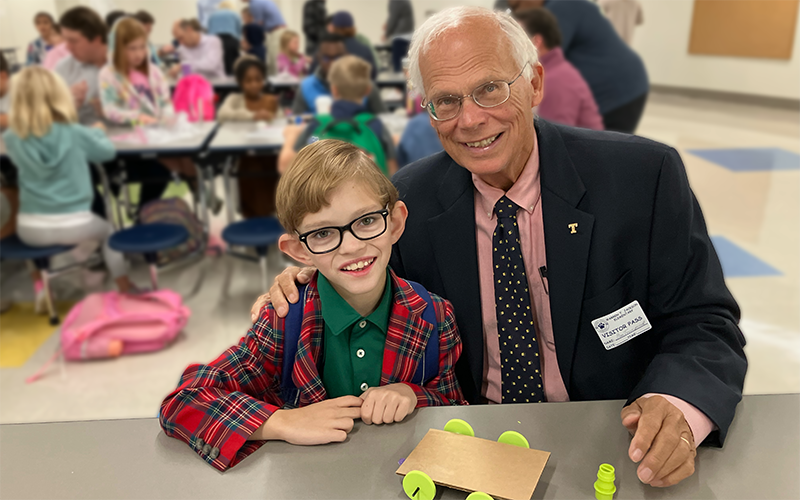Tech Talent On and Off The Screen
By: Kelley Freund | Categories: Alumni Interest
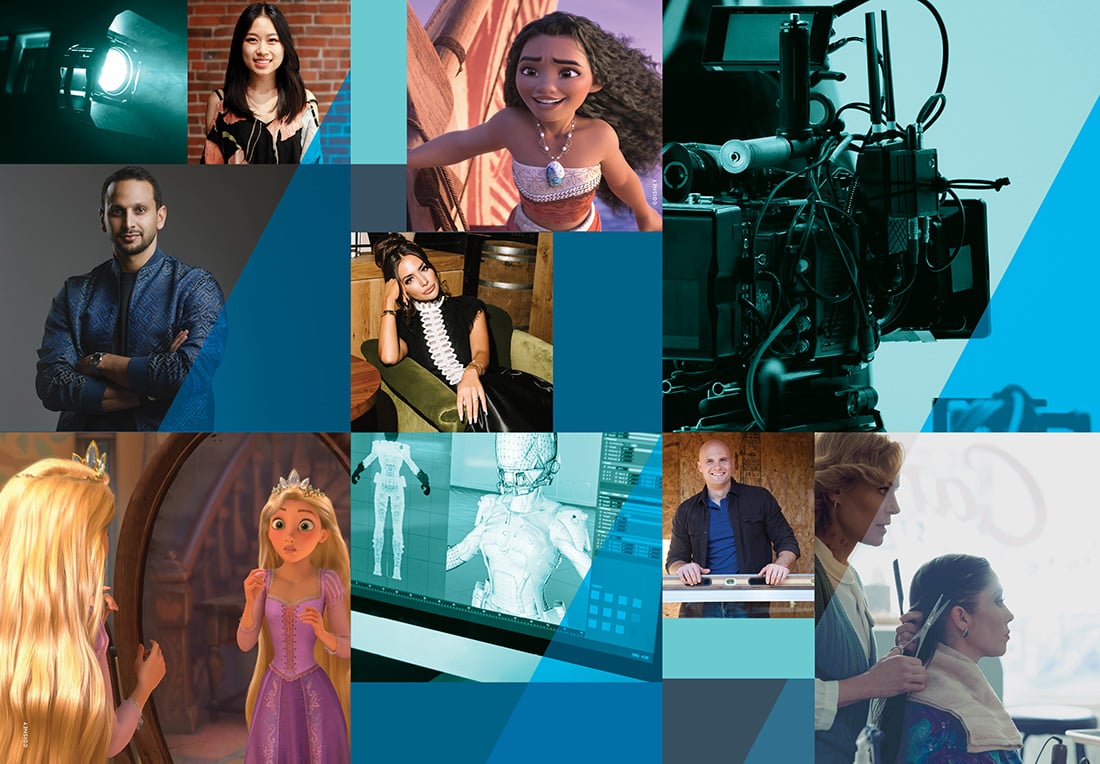
“There’s an opportunity for us to better develop the workforce as this industry is evolving, and to become thought and research leaders in this space,” says Freeman. “To do this, we need a flagship academic program, something that becomes a hub for all that activity.”
For many years now, the arts have become increasingly visible at Georgia Tech. Rafael L. Bras, Tech’s former provost and Regents’ Professor, was an early champion of integrating the arts into the fabric of campus through works of public art and through collaborations between Georgia Tech students and artists-in-residence.
“Dr. Bras helped us to understand that all GT students, regardless of their discipline of study, needed to embrace creativity to be successful in their careers, and that the arts are essential in teaching our students to flex their creative muscle,” Freeman says.
In the fall of 2026, the Institute plans to launch a bachelor’s of science degree in Arts, Entertainment, and Creative Technologies. The new curriculum, which includes collaboration with departments across campus, focuses on artistic practice, technical innovation, and entrepreneurship. Tech also plans to develop the former Randall Brothers property on Marietta Street as an innovation hub called the Creative Quarter focused on the arts, creativity, design, and technology.
“We have had this reputation for so long as being just an engineering school,” Freeman says. “But bit by bit we’re making clear to the world that the arts are a very important part of our DNA here at Tech as well.”
Here, we feature nine alumni who prove just that.
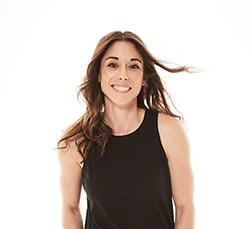
Jessica Luza, STC 07
Actress in Hysteria!, House, MD, and Johnson
Did you always want to be an actress?
It has been in my heart since I was a child. My parents saved the fortune from my first fortune cookie that reads, “You will be drawn to the glamour of the stage.” Once I found out that the kids on Full House were having fun AND getting paid, I was hooked and never looked back.
Tell us about Hysteria!
I like to describe it as Stranger Things meets Freaks and Geeks. It takes place in a fictitious small town in Michigan and is set against the very real Satanic Panic of the late ’80s. The star high school quarterback goes missing, and rumors begin to fly that local Satanists are involved with his disappearance. The misfit members of the band Dethkrunch take advantage of the sudden interest in the occult and pretend to be Satanists to get more street cred. I play Cassie Dandridge, one of the more grounded characters on the show, and it was a blast to play her and lean into her intelligence and power.
How do you think you’ve grown as an actress over the years?
I’ve realized that show business is a very real business, and that helps me take pressure off myself and to not take things as personally. I have also realized I want to start producing and writing more. I don’t love being beholden to a casting director or producer who gives me permission to work.
Is it exciting or strange to see yourself on television?
I am always so grateful to have been cast that I usually watch the project at least once to support it and will post about it on social media. It would be a lie to say it isn’t exciting to see myself on television because I know that little Jessica would be so proud that I continue to follow my dreams.
What is a lesson from Tech that has stuck with you?
Perseverance. Tech was a very challenging school, but I loved that I could work hard and push myself. With acting there is endless rejection, so having perseverance is absolutely necessary.
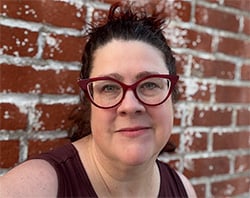
Heather Pritchett, MS CS 93
Technical Director, Walt Disney Animation Studios; credits include Wreck-It Ralph, Tangled, Frozen, and Mulan
Do you have a project that has been particularly meaningful to you?
My favorite project was Tangled. Not only was it a fantastic movie to work on because we were really pushing what was the current edge of hair and skin rendering, but it was also a success in theaters. In many ways, it was one of the first movies I worked on that I felt the public loved as much as I did.
What do you enjoy about working in this field?
As a technical director, I have always loved that my job sits at this wonderful intersection of creativity and technology. I get a chance to work closely with artists and develop tools and workflows that enable them to be better at their jobs.
What attributes are necessary to be successful in this type of job?
Putting aside programming and computer graphics knowledge, my role also involves a lot of soft skills. You need good communication skills and the ability to work well with a team. I think one of the most valuable attributes is being able to look at a problem and know how to break it down and solve it. Good technical directors need to be able to find not just the best solution, but sometimes the quickest, and those aren’t often the same.
What is one lesson from Tech that has stuck with you?
Things change whether you want them to or not. I often joke that my job feels completely different every three to five years, and most of that is because of technology. Faster machines, improved tools, better graphics cards, and new research are constantly pushing us to make our movies better. To quote Walt Disney, “Around here, however, we don’t look backwards for very long. We keep moving forward, opening up new doors and doing new things…and curiosity keeps leading us down new paths.”
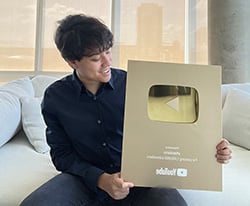 Nestor Galarza, CS 22
Nestor Galarza, CS 22CEO of xNestorio; online content creator with over 1.5 billion views and over 6 million subscribers
What led you to start creating content and posting videos?
From a young age, I was really into YouTube. I was also into gaming, and I was good at it—so good, in fact, that people did not believe it. The inception of my channel was making videos to prove I wasn’t cheating. It was cool watching a community gather around my content. I remember being shocked at how much fun we were having. So, I kept doing it.
How do you think you’ve grown as a content creator?
When I first started, I was just a kid playing with my laptop, uploading as much content as I could and hoping something stuck. I started to look at other big content creators in my space and studied what they did. It pushed me to give my viewers a unique experience.
Why Minecraft videos?
When I started, Minecraft was my favorite game. I feel like Minecraft has encouraged a level of creativity. Anyone can play the game. Anyone can modify it. We can code and add whatever we want into the game and make anything happen. The possibilities truly feel endless.
What does it mean to you that over 6 million people subscribe to your work?
Twelve-year-old me could never imagine getting to this point. When you have that many people watching you, you want to make sure that you appreciate their time. I try not to get too caught up on the numbers and just focus on making the best content possible.
When I got to Tech, I actually met people who had been watching my YouTube channel for as long as I’d been making videos! It’s cool to encounter people I’ve impacted in the real world.
What advice do you have for others who want to be content creators?
I encourage you to embrace failure. You have to be able to ask yourself, “What worked here? What didn’t?” and move forward. Every failure taught me a different lesson. If I wasn’t such a failure, I could never have such success.
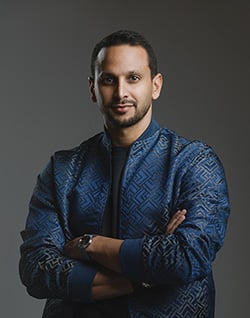 Tamer Shaaban, CS 11
Tamer Shaaban, CS 11Film/commercial director whose work includes commercials for Microsoft, Audi, Lay’s, and Dove
When did you start making films?
I’ve been making films since I was in high school. I studied Computer Interaction at Georgia Tech, but I got approval from the dean to take a video class, and then I took film courses outside of Tech. I also took the school’s Campus Movie Fest as an opportunity to make films, and every year, I won something. That reinforced that I could do this.
Can you walk me through your creative process?
I’ve never thought of myself as a creative person. For me, the worst thing is for someone to say that I have an open budget, and I can do whatever I want. That’s rare, but if something like that does happen, I start creating the lines of the box. I ask a lot of questions: What’s the demographic? What feeling are we trying to evoke? I create all these guidelines, and then that allows me to be creative.
Do you have a favorite project?
I really like the Lay’s ad, featuring Leo Messi and girls in a refugee camp in Jordan. [This commerical won a Clio Sports Award for Social Good.] I felt I was giving these women a voice—they love soccer just like the rest of us. After we wrapped, one of the young girls told me that the two days we spent filming were the best she’s had in her life.
What are your thoughts on technology?
I don’t think projects are going to rely on any one tool, so I think it’s important to become as knowledgeable as possible about all the tools that are available. But more importantly than that, you need to understand storytelling—that’s the most powerful tool in your arsenal. You’re going to see a ton of content come out in the coming years. Anybody can create anything, but it’s going to be the people who can evoke emotion that will stand out.
Do you have advice for thinking creatively?
I think creativity is a muscle that you can build. One of my professors in a Tech design class told me to look at everything I use in the world and find a way to improve it. I started doing that and found myself becoming more creative in the way I was thinking because I was questioning everything.
 Colleen Coyle, EAS 08
Colleen Coyle, EAS 08Broadcast meteorologist
What interested you in meteorology?
As a kid, I would write down the weather for the day. The clouds fascinated me, and I wanted to learn more about how it all worked. At Tech, there was a specialized study for meteorology, so I decided to pursue that, but I really wanted to be more of a storm chaser.
How did you get into the broadcast side of things?
I actually have stage fright, so I find it hilarious that this is the career I fell into. While doing an internship at WSB in Atlanta, I started practicing in front of the chroma key wall [green screen]. I didn’t think anyone was watching, but later found out I was being routed to all the televisions around the news station. The team at WSB helped me put a resume tape together that I sent out.
What have you enjoyed about this career?
Witnessing the power of storytelling. I’ve seen some pretty tragic things, like the EF 5 tornado in Joplin [Missouri] in 2011 and Hurricane Harvey in Houston in 2017. I was amazed by the openness of people. I’m speaking to them on what could be the most horrible day of their life, and they still were willing to tell me about their experience because they wanted other people to understand what was going on in their town. I felt very privileged to be able to tell people’s stories.
What advice do you have for someone interested in a broadcast career?
Don’t put someone else’s “no” on the table for them. The realm of entertainment and broadcast can be tricky, but you never know what may happen. Don’t be afraid to send someone a resume tape or apply for a position. Don’t be afraid to go for it.
What’s a lesson from Tech that has stayed with you?
Tech is not an easy school. Very quickly I learned motivation and drive and a healthy work ethic. Tech is also about innovation and exploring new things, and I feel that’s now something that I’ve been able to apply not just in my career but in other avenues as I pursue everyday life.
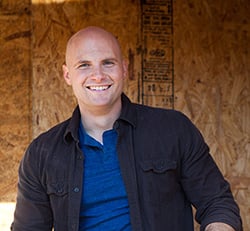 Chip Wade, ME 06
Chip Wade, ME 06Craftsman, TV host/contributor/producer who has appeared on HGTV, FOX, ABC, and Travel Channel
How did you get into the media industry?
I was working as a structural engineer at a homebuilding firm when a random email landed in my neighborhood homeowners association inbox. It was about a new TV show looking for old neighborhoods as potential filming locations and people to join the cast. The carpenter role caught my eye. Growing up, I spent my childhood following my dad around the workshop. That first audition was one of the most awkward experiences of my life. They put a camera three inches from my face and told me to “act normal.” Somehow, the producers saw potential in me.
What do you enjoy about being a contributor on morning television shows?
These segments are a creative outlet—an opportunity to use my expertise to showcase cool products, innovative building techniques, and real-world solutions that make a difference for viewers. What people don’t see is everything that goes into making a three-minute live segment. The day before, my small team and I spend 12 to 15 hours constructing the set, troubleshooting, and fine-tuning every detail to make sure everything runs smoothly. Seeing that vision successfully presented on live TV is an incredible payoff.
Do you get nervous on live TV? How do you calm your nerves?
No matter how many live segments I’ve done, there’s always an adrenaline rush before going on. But for me, confidence comes down to preparation. I put in the work ahead of time to make sure I fully understand the topic. My engineering background helps a lot—I’m used to breaking down complex systems, understanding specs, and figuring out how things work.
Is there a favorite project you’ve worked on over the years?
My wife and I have partnered with major media outlets to design and build innovative show homes. What I love most about these projects is the opportunity to work directly with brands, engineers, and fabricators—not just to showcase their latest offerings but, in many cases, to push the boundaries and develop entirely new applications for their products.
What advice do you have for thinking creatively?
I think creativity starts with curiosity. My favorite question to ask is: “What if?” At the end of the day, innovation isn’t about coming up with the wildest idea—it’s about creating something that actually solves a problem and makes life better.
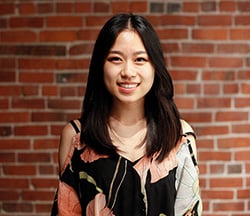 Jolena Yao, CM 19
Jolena Yao, CM 19Look development artist for Moana 2, Walt Disney Animation Studios
How did you get into the field of animation?
Growing up, I wasn’t the kid who was always drawing, so in an age of 2D animation it didn’t seem like a career I could pursue. But when computer animation gained in popularity, I thought I could work on the technical side. I majored in Computational Media at Georgia Tech, and while I learned a variety of skills, I also learned that ultimately I wanted to go into the artistic side of animation. I pursued a master’s degree in Visualization at Texas A&M, where I discovered my love for look development.
What is a look development artist?
In look development, we translate the 2D artwork into the 3D world. We are given 3D models, to which we add color, texture, material properties, and procedural instancing to bring the environments and characters to life in the CG world. Specifically, I work in environment look development, so for Moana 2, I was helping create the environments the characters live in. This ranges from props the characters are interacting with, to the full-scale sets, such as islands and the magical realm inside of a gigantic clam.
What does it mean to you to know that work you’re doing is being seen in movie theaters across the country?
Moana 2 in particular means a lot to me as a woman of color who grew up without a lot of representation in the media I was consuming. It makes me so proud to think that someone could see themselves or their culture represented on screen.
What do you enjoy about working at Disney?
It is great to be working every day with people who are so passionate about what we are creating. It’s also a dream come true to be contributing to the legacy that I grew up with and have loved throughout my life.
What is one lesson from Tech that has stuck with you?
Georgia Tech really taught me how to problem-solve and to think critically, which is something that is very valuable in my job.
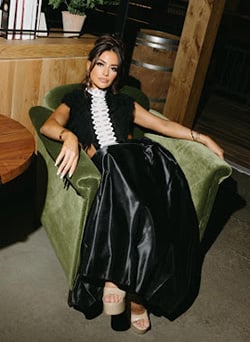 Roxanne Kaiser, BA 15
Roxanne Kaiser, BA 15Reality show star in Netflix’s The Ultimatum: Marry or Move On
Why did you decide to join a reality show?
The premise of The Ultimatum is to join your partner in a journey to determine if you’re ready for marriage—or not. I was at a point in my life where the idea of settling down felt impossible. My reasons for being anti-marriage at the time lacked depth: “I don’t see the need” or “I don’t believe in the institution of marriage.”
How do you think the show changed you?
The show completely transformed my perspective on love and marriage. I never imagined that two-and-a-half years after filming, I’d be married, have a husband, and be navigating this entirely new chapter of life. The experience gave me clarity, helped me embrace the idea of partnership, and shaped the way I view commitment. It’s been an incredible journey, and I’m so grateful for how much I’ve grown because of it.
Can you talk about some of the pros and cons of being on a reality show?
One of the biggest advantages was the personal growth it facilitated for me. I learned so much about myself, what I wanted out of life, and the things that truly mattered (or didn’t) in my relationship.
The downside of putting your life on display is the criticism—and it can be brutal. If you’re not prepared to tune out the noise, it can take an emotional toll. The scrutiny can be overwhelming at times, but ultimately, the experience has taught me resilience and how to focus on the positives.
What advice do you have for people looking to put their lives in the spotlight?
Think of it like starting a business—it takes grit, hard work, and a hustle mentality. You’re essentially building a brand, showing the world who you are, and hoping people connect with your journey. And once they do, you have to show up authentically, consistently, and with purpose for the people who follow and support you.
What is a lesson from Tech that has stuck with you?
You’re never the smartest person in the room. Being surrounded by brilliant peers humbled me and showed me the value of learning from others.
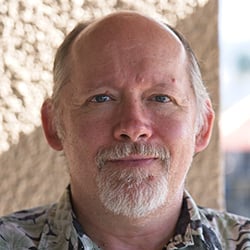 Wayne Wooten, ICS 90, PhD CS 98
Wayne Wooten, ICS 90, PhD CS 98Rendering engineer; credits include Toy Story 2, Monster’s Inc., and A Bug’s Life
What attracted you to this field of work?
It was the bid for the Atlanta Olympics in 1996. There was a lab at Georgia Tech that built this interactive, immersive experience so that the IOC could have a built-out map. When they touched the venues, it would play computer-animated videos of CG renderings of places like the new stadium. Their lab was next door and I would wander over to see what they were doing. It really excited me.
Was there a project you really enjoyed working on during your time with Pixar?
Early in my career, the computers that rendered frames of animation were about as powerful as an Apple watch, and it would take hours to get artists back their frames. I was a bit of a rogue agent when I got to Pixar. My officemate and I started using people’s computers for rendering while they were on vacation. Eventually we got a call from the head of IT. We thought we were going to be in trouble, but instead he tasked us with deploying a system that would figure out who was on vacation and utilize all the computers in the facility for rendering. In the end, that system was nominated for a scientific Oscar.
What was a project that challenged you?
In the early days, it was hard to compute things like a glass of water with light shining through. Over the years we added the capabilities of a new technique called ray tracing. Now all movies at Pixar are ray-traced.
What’s your job now with Adobe?
It’s going to sound boring, but it’s the same thing I did at Pixar. There’s a piece of Adobe software called Substance that allows users to create physically realistic looks on 3D models, and they need to be able to render those. I work on that software.
What’s one lesson from Georgia Tech that has stuck with you?
To learn when life has provided you with a lucky opportunity that you shouldn’t turn down, even when these opportunities are scary or challenging. That was very true for my decision to come work at Pixar. I was turning down professor positions when there was no guarantee that Pixar was going to make a second feature-length movie that was going to be a hit. But it was a chance to work with a lot of great people and something I couldn’t turn down.
Images: Moana 2 and Frozen: ©DISNEY, Hysteria!: Mark Hill/Peacock; Luza: John Russo; Coyle: The Weather Channel; Wade: Jessica McGowan; Kaiser: @Larissaorokophoto

